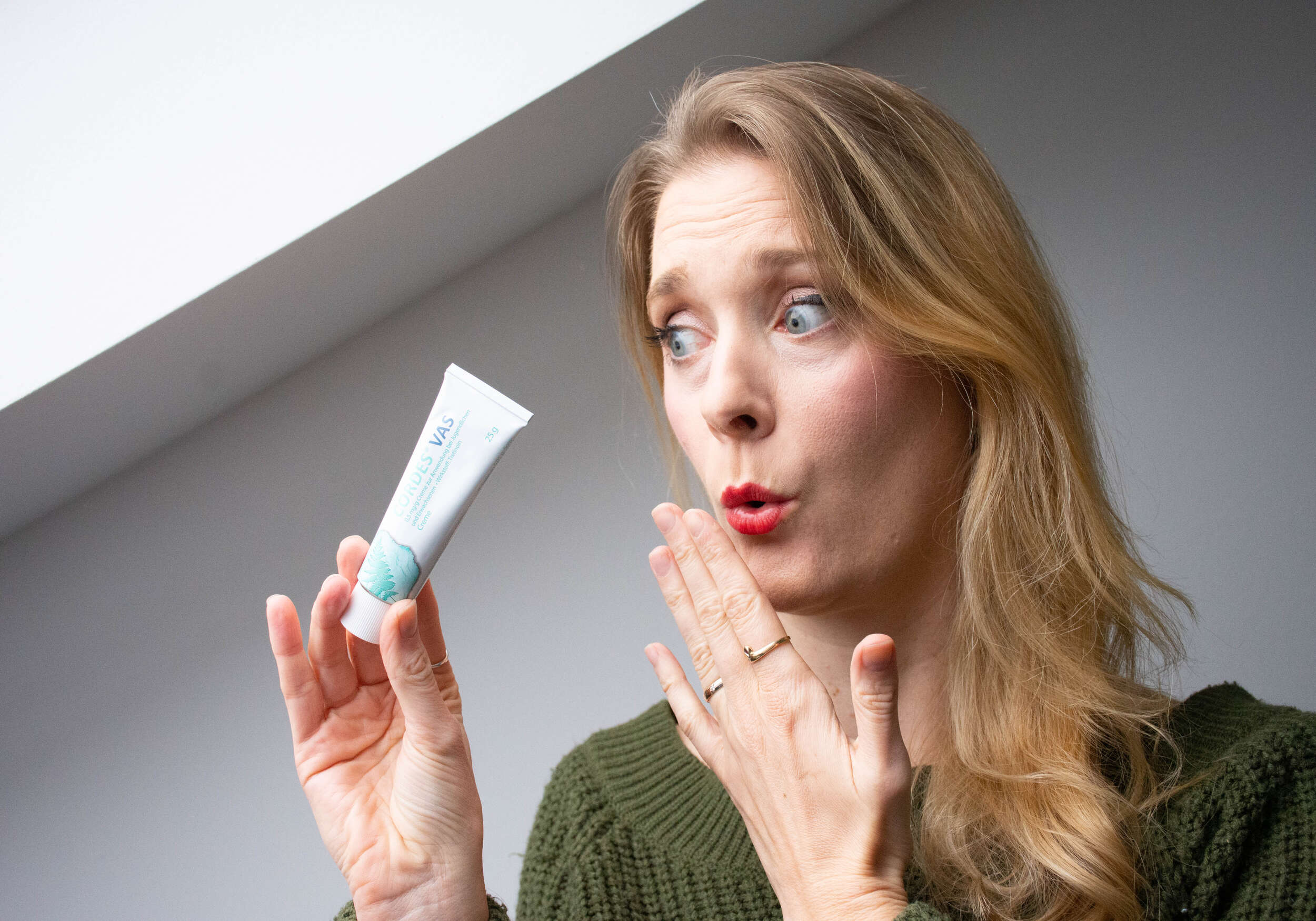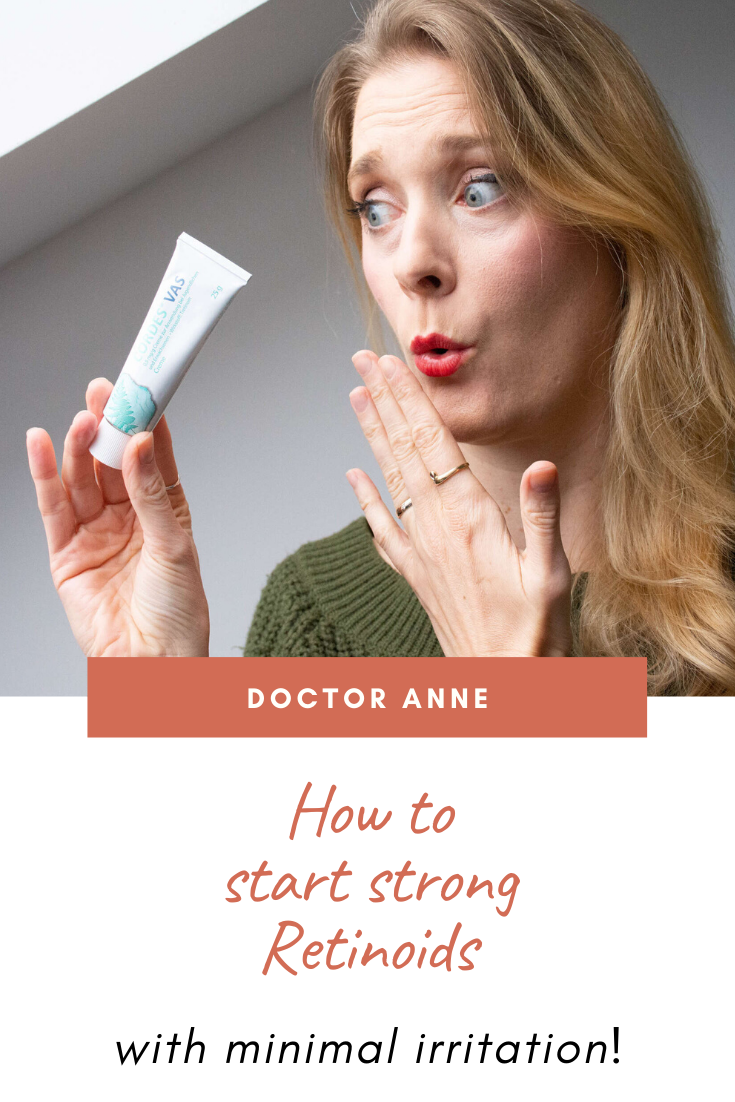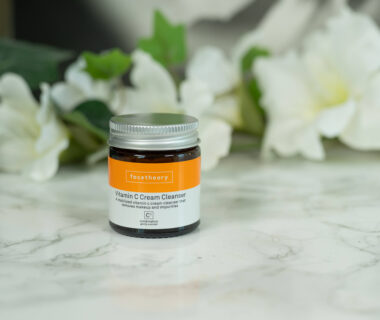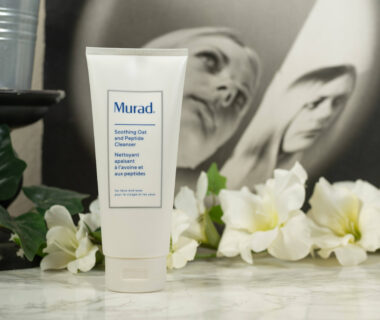Are you scared about starting strong retinoids because your skin is sensitive? Or have you tried them before and just couldn´t deal with the irritation and flakiness?
Because I have been there, with my face falling off and my skin burning, but don’t worry, it doesn’t have to be that way: Today I want to reveal my five steps for how to use retinol with minimal irritation.
If you are still unsure about the benefits of retinoids for your skin, check out my video on the different kinds of retinoids and, more importantly, on how they can help improve your skin.

What are the side effects of retinoids?
Problem is: To reap the benefits, you first have to go through a phase called Retinization, where your skin is forced to adapt to the irritation and increased cell turnover strong retinoids evoke.
Which means you will experience dry and flaky skin, redness and stinging as well as, if you suffer from acne, a purging phase. Your skin will basically get worse before it gets better.
What if I told you though that there is a way to minimize that irritation? It won´t disappear completely, but if you introduce your retinoids in a sensible way, you will get glowing, clear skin with minimal side effects.
The key is to remember: Retinoids are a marathon, not a sprint!
Start slow and keep on going
Yes, if you go in quick and hard, you will see results faster. But chances are, you will be so uncomfortable, you might quit and never reach the retinol happy place where your skin is clear, glowing and your pores are barely noticeable!
I will be talking about prescription strength today, think Tretinoin or Adapalene. If you are using an OTC product, feel free to go quicker.
So you have got your product and are ready to start. What is the first step?
1. Strip your routine back to basics!
I don´t want you to use ANY other actives as long as you are going through the retinoid adaption phase.
That means no exfoliants (physical or chemical), no Vitamin C, nothing but a gentle cleanser, a hydrating serum, a good moisturizer (probably richer than you normally use) and sunscreen (obviously!)
Stick to that routine for at least six weeks and then slowly start introducing other actives once your skin has fully adapted.
2. Start slowly.
I don´t want you to apply the full dose every night right now, I want you to use less (think half a finger tip) and only every other or even every third night.
Always apply your retinoid to dry skin, as damp skin increases permeation.
I do half a fingertip every third night for beginning as my skin is pretty sensitive to retinoids.
Keep doing that for at least two weeks, and don´t get cocky if you apply the retinoid the first night and don’t experience any issues. The irritation usually starts after around a week and comes with a delay, so if you apply the product, the flaky skin will appear 48 hours later.
If that approach is still too much, try buffering the retinoid, which means that you apply a layer of oil or a occlusive moisturizer first, wait for it to sink in, and then apply the retinoid. That will slow down penetration and again reduce the risk of irritation.
Something I have no personal experience with, but what has apparently helped people with very reactive skin is „Short Contact Therapy“, where you use your retinoid as you would use a face mask. You apply it, wait for 30 minutes and then wash it off and slowly work your way up to eventually leaving it on over night.
3. Increase the intensity with a plan!
If your skin is fine after two weeks, with only minimal irritation, it is time to increase the intensity.
Should your skin NOT be fine, don´t do that quite yet, but stay at your current level and reevaluate your skin every two weeks. Again: Slow and steady wins the race!
I prefer to increase the frequency first, so if you have done every other night, you switch to every night (if you have done every third night, switch to every other – you get what I mean).
If that is fine for two weeks with only minimal irritation, increase the intensity again, so if you build up to using the retinoid every night, switch to using the full amount of product instead of only half next.
Whenever your skin expresses more than mild irritation, stay at your current level for two weeks longer and then reevaluate. Only increase the intensity if your skin has zero to mild irritation.
Not everyone will be able to build up to full strength every night, and that is completely fine!
Little and consistent will get you better results than quitting after a few weeks because you couldn´t deal with the side effects.
4. Focus on supportive ingredients
There are some ingredients that have shown to help the skin adapt to retinoids quicker, such as Niacinamide.
So try to introduce Niacinamide, Ceramides and Phospholipids into your routine to help your skin get resilient.
Niacinamide has the most scientific backup for that, but I personally found the Zelens Power D Treatment Drops (Review here) helped me tremendously, even though there is not much data on it´s efficacy. Others report that the Dr. Jart products work very well for them.
5. Assess your skin and see what other actives you might need
Once you have reached the retinoid happy place, take a close look at your skin and see where you could need some extra help. Depending on how well your skin reacts to your product, that might be after six weeks, after two months or even later.
Don´t worry, retinoids basically do everything your other actives will, so you are not magically going to age by ten years because you stopped your Vitamin C!
You might find that your skin looks so good, you don´t feel the need for extra exfoliants or Vitamin C, and if that happens, good for you!
But if there still is clogged pores or hyperpigmentation, now is the time to (slowly!) reintroduce your other products. One at a time, at a low concentration, and starting with once a week, gradually building up from there.
Psst: If you are unsure which ingredients to intoduce at what age, read here!
Keep your exfoliation at a minimum, be extra careful with BHAs as they tend to be very irritating and don´t exfoliate because „you have to“. Listen to your skin, which is basically the mantra of this whole retinoid guide.
But what if even with all that, my skin can’t tolerate retinol?
Some people don´t get along with retinoids, no matter the strength and concentration, and that is perfectly fine!
You might want to look into other alternatives like Bakuchiol (which seems to be gentler, but is not WITHOUT irritation – I did a whole video on that here).
Or you might want to use other things instead. Retinoids are just one ingredient available in skincare, and while they might have the best research, there are still many other things out there you can do, especially if it is fighting premature aging that you are after.
The key to great skin is never ONE ingredient, it is always a skincare routine that is adapted to your personal preference and skins needs, and if retinoids just aren’t on the cards, then pick something else.



